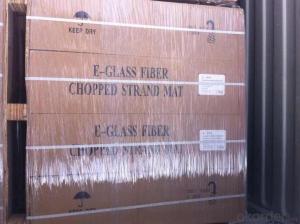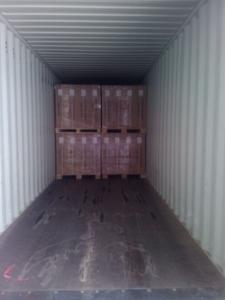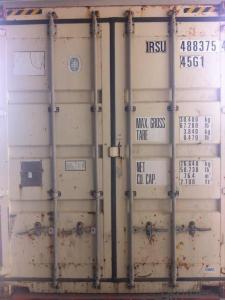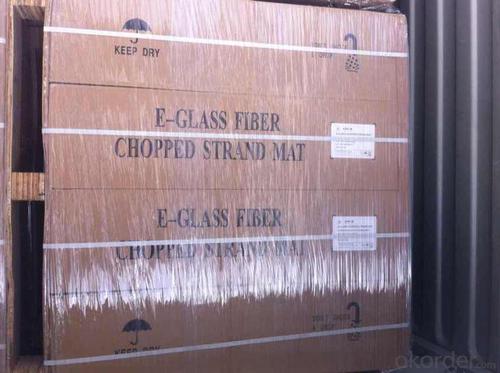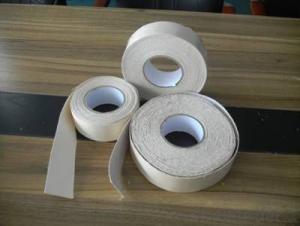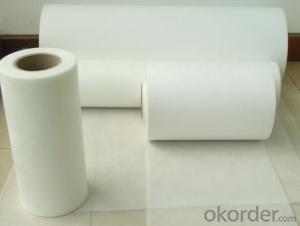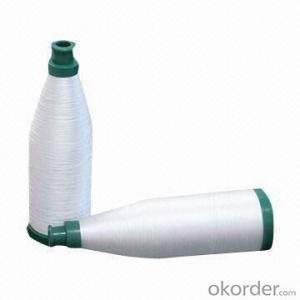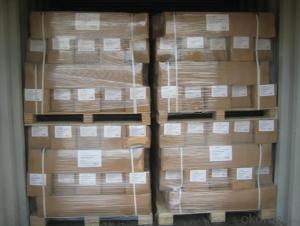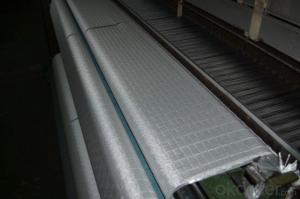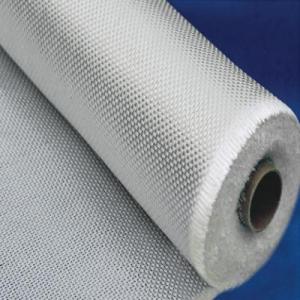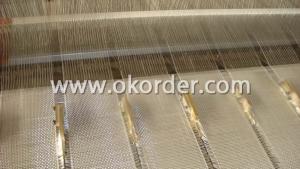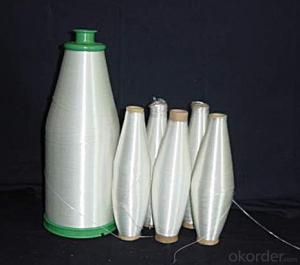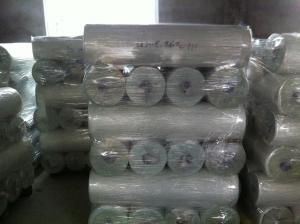Fiberglass Fabrics - E-Glass CSM 450gsm 1040 Width Best Price
- Loading Port:
- China Main Port
- Payment Terms:
- TT or LC
- Min Order Qty:
- 2000 kg
- Supply Capability:
- -
OKorder Service Pledge
OKorder Financial Service
You Might Also Like
Product Description
1.E-glass CSM 450gsm is made of randomly dispersed strands with power or emulsion bonded.
2.Applicable for hand lay-up ,continuous lamination process. Compatible with UP,VE.
3.Suitable for transparent panels,ship bodies,automobile parts and interior decorations ,etc.
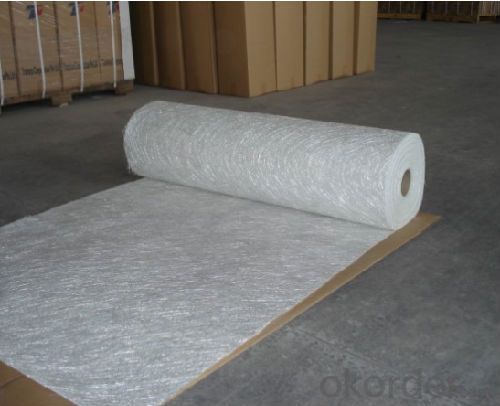
Specifications:
E,C Specification | Weight g/m | Breaking strength N/150mm | Speed of impregnations | Package Weight (kg) |
E-MC100 | 100 | 30 | 60 | 20 |
E-MC200 | 200 | 30 | 180 | 30 |
E-MC350 | 300 | 43 | 180 | 30 |
E-MC450 | 450 | 60 | 180 | 30 |
E-MC600 | 600 | 80 | 180 | 30 |
Characteristics
1.Consistent thickness and stiffness.
2.Rapid impregnating and good compatibility with resin.
3.Superior wet through with less air trap.
4.Good mechanical properties and high strength of parts.
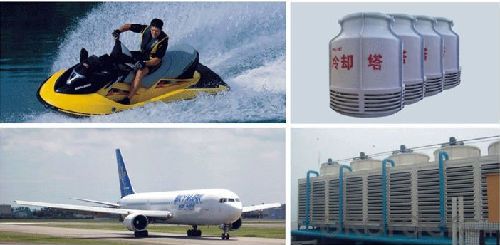 Packaging&Storage
Packaging&Storage
Each roll is packed by polyester bag,and then put into a cardboard box or plastic wowen bag.The weight of each roll is between 20 to 85 Kg, The rolls are to be horizontally placed and could be in bulk or on pallet.Optimum storage conditions are between the temperature of 5~35℃ and with the humidity between 35%~65%.The product should be used within 12 months from the time of delivery and remain in theiroriginal packaging until just prior to use.
FAQ:
1.What is the delivery time ?
15days after receiving the deposit
2.Are you a trading company or factory.
We are factory,and we have more than 10 years of experience.
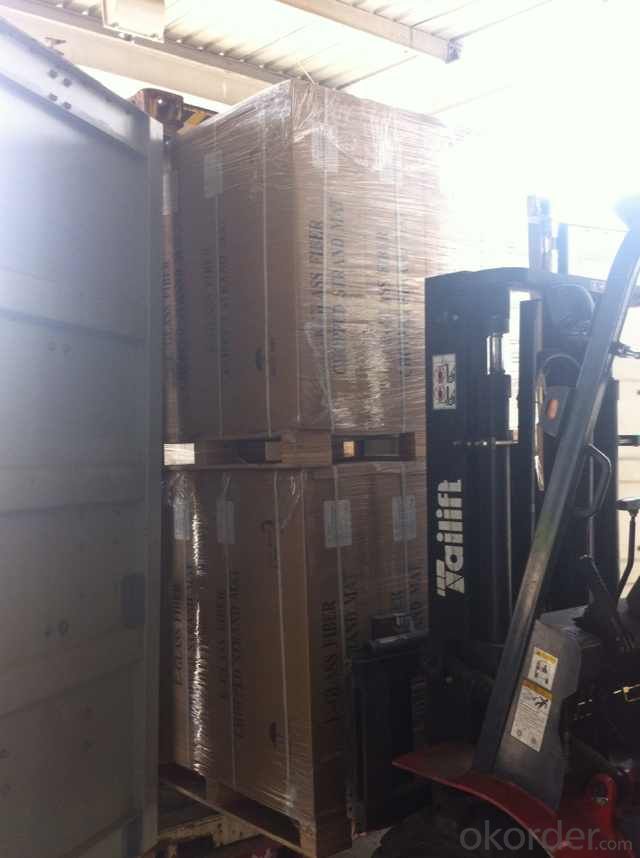
- Q: Can fiberglass fabric be used for insulation in industrial ovens?
- Indeed, insulation in industrial ovens can be achieved through the utilization of fiberglass fabric. Possessing exceptional thermal insulation properties, fiberglass fabric proves to be an ideal selection due to its capacity to endure high temperatures. By effectively capturing and confining heat within the oven, it enhances energy efficiency. Furthermore, the durability, resistance to chemical and moisture exposure, as well as low thermal conductivity of fiberglass fabric contribute to its reliability and longevity as a superior insulating option for industrial ovens.
- Q: Are fiberglass fabrics resistant to solvents or cleaning agents?
- Yes, fiberglass fabrics are generally resistant to solvents or cleaning agents. Fiberglass is a synthetic material made from fine fibers of glass, which provides it with excellent chemical resistance. It can withstand exposure to a wide range of solvents, cleaning agents, and chemicals without deteriorating or losing its structural integrity. This makes fiberglass fabrics an ideal choice for various applications where resistance to solvents or cleaning agents is required, such as in industrial settings, automotive components, insulation materials, and protective clothing. However, it is always recommended to check the specific chemical compatibility of the fiberglass fabric with the solvent or cleaning agent in question, as some highly aggressive chemicals may still have an impact on its performance.
- Q: How does fiberglass fabric perform in terms of mold and mildew resistance?
- The resistance of fiberglass fabric to mold and mildew is generally commendable. This can be attributed mainly to its non-porous nature, which prevents the absorption of moisture. Mold and mildew thrive in damp environments, so the moisture resistance of fiberglass fabric effectively hinders their growth. Moreover, fiberglass fabric is often treated with specialized coatings or finishes that further enhance its resistance to mold and mildew. These treatments form a protective barrier on the fabric's surface, making it more challenging for mold and mildew spores to attach and proliferate. However, it's important to note that although fiberglass fabric offers good resistance, it is not entirely immune to mold and mildew. If the fabric is exposed to excessive moisture or if it is not adequately cleaned and maintained, mold and mildew can still develop. Therefore, regular cleaning and proper care are crucial in preserving the mold and mildew resistance of fiberglass fabric.
- Q: Can fiberglass fabric be used for acoustic insulation?
- Indeed, acoustic insulation can be achieved by utilizing fiberglass fabric. Renowned for its remarkable sound-absorbing characteristics, fiberglass fabric proves to be an optimal substance for such purpose. By adeptly absorbing sound waves, it effectively minimizes the occurrence of echoes or reverberations resulting from their reflection off rigid surfaces. Consequently, fiberglass fabric finds extensive utilization in diverse applications like wall panels, ceiling tiles, and acoustic curtains, thereby enhancing sound quality and diminishing undesired noise levels in venues such as theaters, recording studios, and offices. Moreover, fiberglass fabric boasts attributes of being lightweight, long-lasting, and facile to install, thereby rendering it a favored option for acoustic insulation solutions.
- Q: Are fiberglass fabrics suitable for use in the defense industry?
- Yes, fiberglass fabrics are suitable for use in the defense industry. They offer numerous advantages such as high strength, durability, and resistance to fire, chemicals, and extreme temperatures. These qualities make fiberglass fabrics ideal for applications such as ballistic protection, vehicle armor, and aircraft components, enhancing the safety and performance of defense equipment.
- Q: Can fiberglass fabrics be used for insulation in HVAC ductwork?
- Yes, fiberglass fabrics can be used for insulation in HVAC ductwork. Fiberglass fabrics are commonly used in HVAC ductwork insulation due to their excellent thermal properties and fire resistance. They can help reduce heat transfer and prevent energy loss by providing a layer of insulation around the ductwork. Additionally, fiberglass fabrics are easy to install and can be custom fitted to suit the specific requirements of the ductwork. They are also durable and resistant to moisture, making them suitable for both residential and commercial HVAC systems.
- Q: How is fiberglass fabric cleaned?
- To easily clean fiberglass fabric, you can follow some simple procedures. Begin by eliminating any loose dirt or debris from the fabric through vacuuming or gently brushing. For general cleaning, create a mixture of mild detergent and warm water. Proceed to gently scrub the fabric using a soft brush or sponge, ensuring that all areas are covered evenly. It is advised to avoid harsh chemicals or abrasive materials, as they could potentially harm the fabric. Once you have finished scrubbing, thoroughly rinse the fabric with clean water to eliminate any soap residue. Lastly, allow the fabric to completely air dry before using it again. By adhering to these steps, you will effectively maintain the cleanliness and durability of your fiberglass fabric.
- Q: Is fiberglass fabric resistant to chemicals used in pharmaceutical industry?
- Yes, fiberglass fabric is generally resistant to the chemicals used in the pharmaceutical industry. Its non-reactive nature and high chemical resistance make it suitable for use in various pharmaceutical applications such as filtration, insulation, and protective clothing. However, it is important to note that the specific chemical resistance may vary depending on the type of fiberglass fabric and the concentration and duration of exposure to the chemicals.
- Q: How does fiberglass fabric perform in UV resistance?
- Fiberglass fabric possesses outstanding UV resistance due to its distinctive qualities, such as its chemical composition and manufacturing process. These inherent properties enable it to effectively withstand the harmful impacts of ultraviolet (UV) radiation emitted by the sun. Over time, many materials tend to degrade and change color as a result of exposure to UV radiation. However, fiberglass fabric is specifically engineered to endure long-term exposure to UV rays without experiencing significant damage. Consequently, it serves as an ideal option for outdoor applications where the fabric is consistently exposed to sunlight. The UV resistance of fiberglass fabric stems from the remarkable resilience of its glass fibers, which exhibit exceptional resistance to UV radiation. Moreover, fiberglass fabric is frequently coated with a protective finish or treated with UV inhibitors to enhance its capacity to withstand UV damage. The UV resistance performance of fiberglass fabric may differ depending on the precise composition and quality of the fabric itself. Generally, fiberglass fabrics of higher quality manifest better UV resistance, ensuring that they maintain their structural integrity and color for an extended period. It is crucial to acknowledge that although fiberglass fabric possesses a high degree of resistance to UV radiation, it is not entirely impervious to its effects. Prolonged exposure to intense sunlight can still induce some level of degradation over time. Therefore, it is always advisable to adhere to the manufacturer's guidelines for proper care and maintenance of fiberglass fabric, thus guaranteeing its longevity and optimal UV resistance.
- Q: How does fiberglass fabric handle moisture and humidity?
- Fiberglass fabric is known for its excellent resistance to moisture and humidity. Unlike other materials, it does not absorb water or become weakened or damaged by exposure to moisture. This makes it highly durable and suitable for applications in high-humidity environments or areas prone to moisture.
Send your message to us
Fiberglass Fabrics - E-Glass CSM 450gsm 1040 Width Best Price
- Loading Port:
- China Main Port
- Payment Terms:
- TT or LC
- Min Order Qty:
- 2000 kg
- Supply Capability:
- -
OKorder Service Pledge
OKorder Financial Service
Similar products
Hot products
Hot Searches
Related keywords
